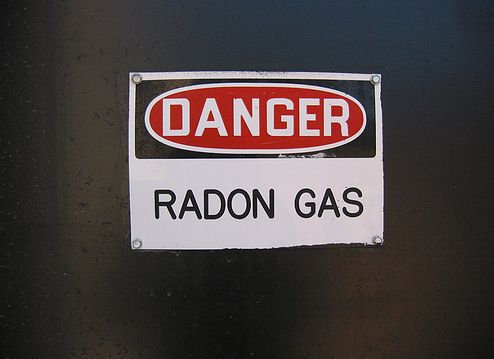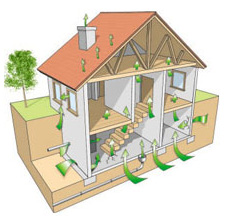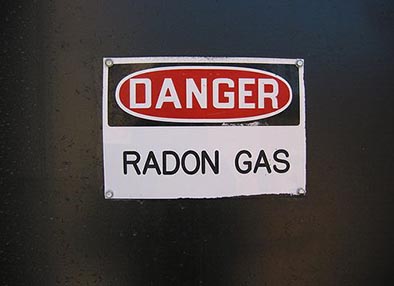Iowans are no strangers to winterizing their homes. Inspecting your roof, cleaning your gutters, pruning your trees, and improving insulation are great ways to prepare your property for the coldest months of the year. This year, add calling radon testing professionals to your winterizing list to ensure your home is the safe and comfortable environment your family deserves.
What is Radon?
Radon is an inert, naturally occurring gas that is colorless and odorless. Trace amounts of radon constantly surround you in the atmosphere, but too much radon gas can pose severe threats to your health. Most radon exposure occurs inside buildings, including places like your home, workplace, or school.
Why is Testing Important?
Over time, exposure to high levels of radon can cause lung cancer. According to the Environmental Protection Agency (EPA), “radon is the second leading cause of lung cancer in the United States.” There are an estimated 21,000 radon-related lung cancer deaths annually in the United States. In fact, the EPA notes that “only smoking causes more lung cancer deaths.”
You go to great lengths to keep your family safe. You weigh safety features in cars before making purchasing decisions. You make healthy meals to nourish your loved ones. Making sure your home has safe levels of radon is one more way to encourage health and safety for your family.
Why Test for Radon in the Winter?
There’s never a bad time to test your home, business, or school for radon. However, experts recommend testing your home during the colder months. When the temperature drops outside, you shut your windows and doors to maintain warmth in your home. One way many Iowans prepare their homes for winter is to install weather stripping. While weather stripping is a great way to keep heat in your home, it also traps radon gas. With radon trapped in your home, it can accumulate to unsafe levels.
The longer your home, school, or business remains shut, the higher the levels of radon will be. Prolonged exposure can be a health hazard, so testing to determine how much radon you and your loved ones are exposed to is crucial to maintaining safety.
Radon Mitigation Systems and Keeping Your Home Safe
When you need radon testing, you need a company you can count on for accurate results. Not only can AmeriServi provide you with accurate test results, but we also offer solutions to help you lower radon levels if your home, school, or business is found to be unsafe. We have years of experience installing and servicing radon mitigation systems to help keep Iowa families safe and healthy.
As you prepare to gather with family and friends during the holiday season this year, take the time to test your home for radon. AmeriServ offers convenient, affordable testing to give you peace of mind that your loved ones are safe in your home. Ready to get started? Give us a call today, or complete our online contact form and a representative will reach out to you soon.
 Our Response to COVID-19
Our Response to COVID-19 



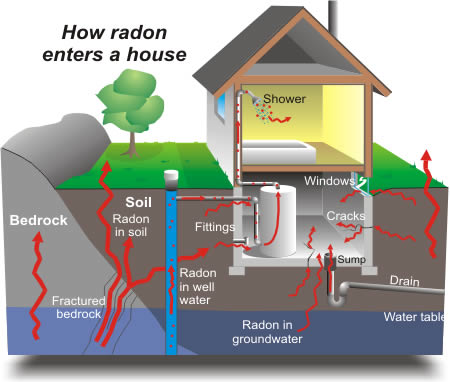 aturally in the soil and often leaks into lower levels of homes. Exposure to radon is the second leading cause of lung cancer, behind smoking, and leads to 21,000 lung cancer deaths annually. Because you aren’t able to see, smell or taste radon gas, it’s important to test the air in your home and fix any problems you find. Many people don’t believe their home is in area with radon, one of the common myths about radon.
aturally in the soil and often leaks into lower levels of homes. Exposure to radon is the second leading cause of lung cancer, behind smoking, and leads to 21,000 lung cancer deaths annually. Because you aren’t able to see, smell or taste radon gas, it’s important to test the air in your home and fix any problems you find. Many people don’t believe their home is in area with radon, one of the common myths about radon.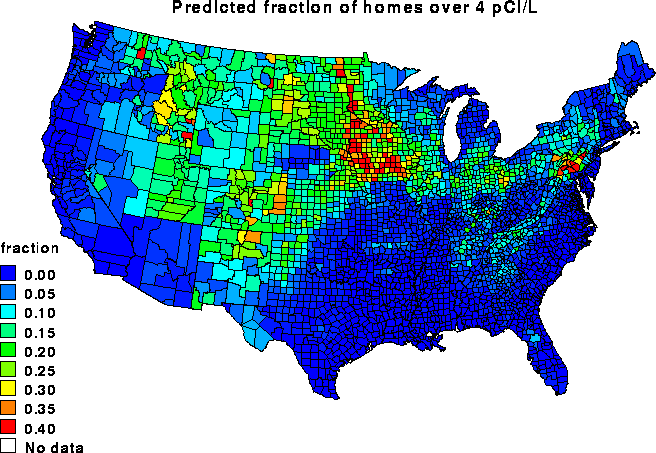 As of February 2016 the Scorecard has been posted with the final results. The majority of their goals were completed. Each of these goals will help reduce radon levels in America and decrease future issues. The end goal is to completely erase radon gas levels, and the EPA is working furiously towards that goal.
As of February 2016 the Scorecard has been posted with the final results. The majority of their goals were completed. Each of these goals will help reduce radon levels in America and decrease future issues. The end goal is to completely erase radon gas levels, and the EPA is working furiously towards that goal. So, how can we get people to understand the very real danger of radon? We believe that awareness and education could be a step in the right direction. Many people do not even know what radon is or what it can cause. Radon is a gas that is created through the natural breakdown of uranium in the earth. It rises through the soil and into homes through small basement or foundation cracks.
So, how can we get people to understand the very real danger of radon? We believe that awareness and education could be a step in the right direction. Many people do not even know what radon is or what it can cause. Radon is a gas that is created through the natural breakdown of uranium in the earth. It rises through the soil and into homes through small basement or foundation cracks.